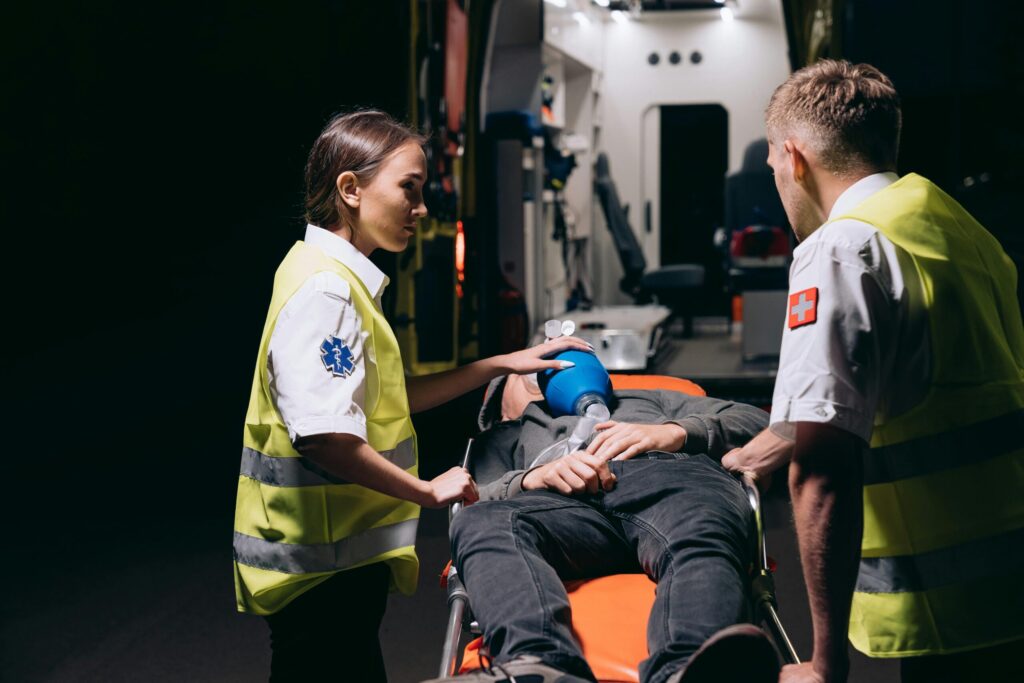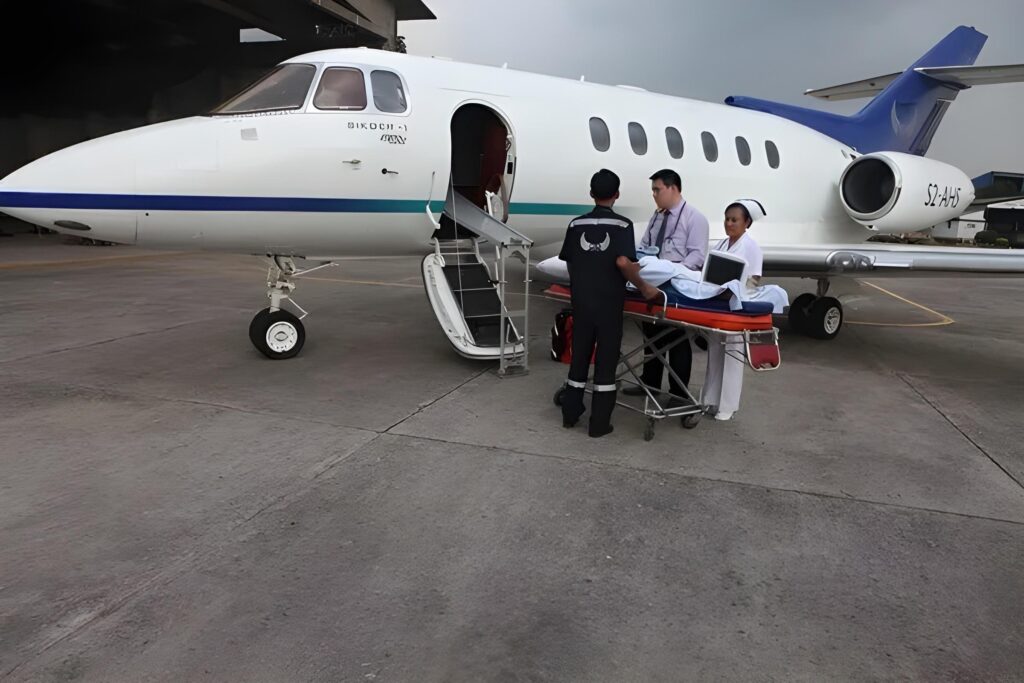In a medical emergency, every second counts. Families and care providers often have to decide between using ground transport vs. air ambulance, and that choice isn’t always an easy one. When someone’s health is on the line, it’s hard to know which path is the right one. The answer depends on more than just speed. It comes down to safety, the level of medical support that’s available during the trip, and making sure that the patient reaches the right facility without any delay. By having a solid understanding of your medical transport options, you’re going to be better equipped to take the next step. Some situations call for an air ambulance (especially over long distances or when advanced in-flight care is needed), while in other cases, ground transport may be a more appropriate solution.
Here’s What You’ll Learn:
- The main differences between ground medical transport and air medical transport
- How to decide when ground transport vs. air ambulance is the right choice
- What to know about medical escort services and how medical repatriation works
- Answers to the most common questions about distance, safety, and medical transport costs
What Is Ground Medical Transport and When Is It Used?
Ground medical transport refers to ambulances or other medical vehicles that are equipped to safely move patients by road routes. These services are most often used for hospital-to-hospital transfers, taking stable patients home after a treatment, or transporting someone to a facility that offers specialized care.
This type of transport is a very important part of many medical transport options because it is widely available, easy to coordinate, and usually more affordable than air travel. It’s especially helpful for short or moderate distances when the patient does not require any kind of urgent or advanced care.
However, ground medical transport does have its limits. For long-distance transfers, it can take significantly more time. In some areas, road conditions or a lack of nearby facilities can also make ground transport harder to arrange. That is why the patient’s condition, the distance involved, and the level of resources available all play a role in choosing the right kind of medical transport.
What Is Air Medical Transport and When Is It Used?
Air medical transport involves moving patients by aircraft when they need urgent or specialized care that can’t wait for ground travel. An air ambulance is a medically equipped plane or helicopter that is staffed with trained medical crews, including flight nurses and paramedics. These teams are ready to handle a wide range of different medical needs during the flight.
This kind of service is often used when fast transport is necessary, such as during medical emergencies, transfers between distant hospitals, or for evacuations from rural or hard-to-reach areas. International flights for treatment or medical repatriation may also require an air ambulance to ensure that the patient stays safe throughout the entire journey.
The main benefits of air medical transport are speed, their ability to reach long-distances, and the access to advanced medical equipment while in the air. Knowing when to use air ambulance services depends on how urgently the patient needs care and how far they need to travel.
How to Decide Between Ground Transport vs. Air Ambulance
When deciding between ground transport vs. air ambulance, there are a few important factors that you should think through.
The patient’s condition is one of the most important. If they are stable and don’t require advanced monitoring or life support, ground transport may be a safe and appropriate option. But if the patient is unstable, needs any kind of urgent medical attention, or is in a remote location, an air ambulance might be the safer and faster choice.
Distance also matters. Ground transport vs. air ambulance decisions often come down to how far the patient needs to go. For international or long-distance travel, time and comfort become even more important, making air ambulance the obvious choice.
Response time and the speed of arrival at the receiving facility can be lifesaving. However, the cost of medical transport can also be an important factor to take into consideration. Ground services usually cost less, while air services include the expense of specialized crews and aircraft.
There is also a middle-ground option to be aware of – a medical escort on a commercial flight. This is often used for medical repatriation, helping stable patients return home with professional help during the journey.
Each case is different, and understanding these factors can help you make the call that’s right for you and your loved ones.
Travel Care Air – We’re Here to Help You Take the Next Step
Deciding between ground transport vs. air ambulance is not something you should have to figure out alone. The right choice depends on the patient’s condition, how far they need to go, and how quickly care is needed.
At Travel Care Air, we understand that these moments are stressful and emotional. Our team has over 40 years of experience and is here to guide you through every step of the process, offering trusted advice, safe coordination, and access to dependable air medical transport services around the world.
We’re available 24/7 to help you make a plan that fits your unique situation.
Contact Travel Care Air today online, or by phone at 1-800-524-7633 to discuss your medical transport needs. We’re always here to help.
Frequently Asked Questions
What is the difference between air and ground ambulance?
Ground medical transport uses ambulances or medical vehicles that travel by road and are perfect for shorter distances and stable patients. An air ambulance is a medically equipped aircraft used for longer distances or when a higher level of care is needed during transport.
What are the two types of air ambulance?
There are two main types of air medical transport: fixed-wing aircraft, which are used for long-distance and international flights, and rotary-wing (helicopters), which are often used for emergency scenes and shorter routes.
Why would you go in an air ambulance?
If a patient needs urgent care, must travel a long distance, or requires constant medical support during the trip, that’s when to use air ambulance services.
How far can an air ambulance fly?
This depends on the aircraft, but many are equipped for medical repatriation, including international flights that cover thousands of miles.


